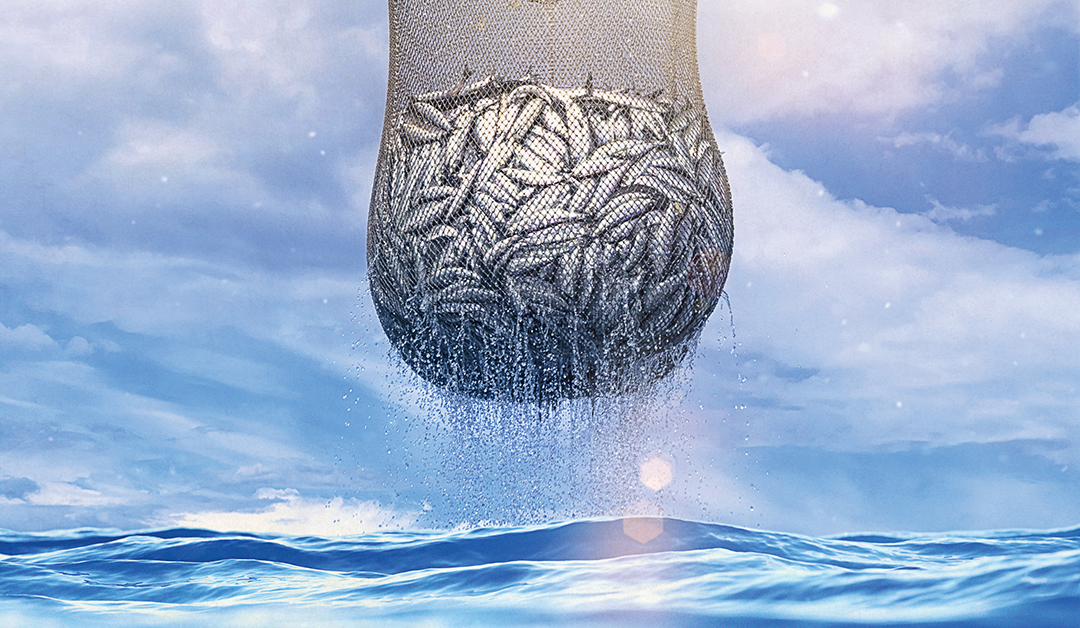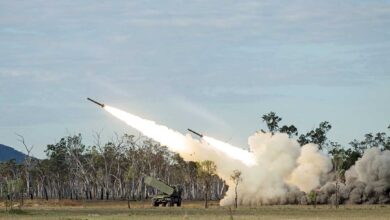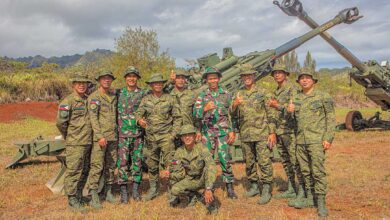Forbidden Catch

Illegal, unreported and unregulated fishing threatens maritime security
Cmdr. Ben Crowell/JOINT INTERAGENCY TASK FORCE WEST and Wade Turvold/DANIEL K. INOUYE ASIA-PACIFIC CENTER FOR SECURITY STUDIES
Valued annually at U.S. $277 billion, commercial fishing is a global industry that serves as a vital element of many national economies and an essential protein food source for maritime nations. As populations expand, so does fishing technology and the demand for seafood. Impacts from severe weather patterns coupled with increased consumption is a dangerous combination exacerbated by pressure from legal and illegal fishing. Through their illegal, predatory behavior, international fishing fleets are having an outsized impact on the environmental health, economic security and geopolitical stability of maritime nations around the world. Additionally, there are significant links between illegal, unreported and unregulated (IUU) fishing and human trafficking, drug smuggling and myriad other maritime crimes. Because of the global, networked and strategic nature of the problem, addressing the IUU fishing threat requires a coordinated international response.
THE THREE ELEMENTS OF IUU FISHING
IUU fishing has three elements, according to the United Nations. The first occurs when fishing operations are conducted within a nation’s exclusive economic zone (EEZ) or within waters governed by a regional fisheries management organization (RFMO), in violation of national or RFMO laws. The second aspect pertains to misreporting or not reporting catches that fall under domestic or RFMO regulations. The third component entails vessels without nationality or fishing in an RFMO area without being a party to the RFMO, thereby not complying with its regulations, or fishing where there are no national or international regulations without regard to stewardship of the fisheries resources.
While the concept and terminology are not particularly threatening, these practices increasingly create ecological, economic and security challenges across the world’s oceans. In a 2018 report by the Stimson Center titled “Casting a Wider Net: The Security Implications of Illegal, Unreported, and Unregulated Fishing,” the authors identified six security threats associated with IUU fishing, including environmental damage, economic impacts, food security, geopolitical destabilization, transnational crime and piracy.

All these elements act as reinforcing feedback loops independent of each other. At the same time, they are interconnected and accelerate the problems and challenges surrounding IUU fishing.
THE STATE OF WORLD FISHERIES
As fishing stocks are depleted across the globe, distant-water fishing fleets and artisanal fishermen are putting greater stress on fisheries resources. In a 2018 report titled “The State of World Fisheries and Aquaculture,” the U.N. observed that 33% of global fish stocks are overfished and 59.9% are at maximally sustained harvest levels. This increased pressure can create scarcity, driving up prices and thereby incentivizing more unlawful fishing and predatory behavior. The increased environmental pressure from overfishing and certain harvesting methods has led to ecological collapse of fishing grounds in the South China Sea and along the east and west coasts of Africa. With the destruction of natural resources, nations are faced with the twofold impact of the loss of a once-renewable economic resource and the loss of food harvested from the sea.
For many nations, this is no small issue. Several countries in the developing world obtain up to 50% of their protein from seafood products, according to the U.N. As fish stocks are depleted, individuals, families and communities are under greater pressure for basic survival. When faced with the cost-benefit analysis of starving or engaging in illegal activity to support one’s family or village, most people will do what it takes to feed their community. Thus, the loss of environmental habitat and natural resources can create economic and food security issues for human populations, which in turn can drive maritime crime and piracy.
OVERFISHING LEADS TO PIRACY
The quintessential example of fishermen turned criminal is the piracy crisis that occurred off the coast of Somalia from 2006 to 2012. The nation fell into chaos in 1991 after the overthrow of dictator Mohamed Siad Barre, and the loss of central authority created large ungoverned spaces surrounding the Horn of Africa. Recognizing a lack of national enforcement, distant-water fishing fleets from the People’s Republic of China (PRC) and perhaps other countries moved into Somalia’s EEZ and collapsed fish stocks. This IUU fishing quickly put local fishermen out of work. With little opportunity for them to earn a living in other ways and with ready access to military-grade weapons, it wasn’t long before piracy became a booming industry in the waters near the Horn.
Today, the challenge of Somali piracy has largely been suppressed through significant efforts involving a multinational naval task force and the widespread use of well-armed ship riders. There were only 11 attacks from 2016 through 2020, down from a high of 237 in 2007, according to the U.S. Office of Naval Intelligence.

The sequence of events that started with IUU fishing evolved to piracy and exacerbated a geopolitical challenge that continues to linger. This should be a cautionary tale of the dangers of IUU fishing.
Piracy hot spots persist in Southeast Asia and the Gulf of Guinea, where 417 and 544 attacks have occurred, respectively, since 2016, according to the intelligence office. Traditional patterns of smaller boats attacking larger, slower vessels to carry out armed robbery or kidnapping for ransom still work. Whether unemployed fishermen are conducting the most recent attacks is unclear. The telltales of proficiency with small boats, including operating them at sea against selected targets — frequently far offshore — indicate a level of competency one would gain as a professional mariner.
OTHER CRIMINAL FACTORS ON THE HIGH SEAS
Armed robbery and piracy remain significant security concerns. In the context of the global maritime community, however, the numbers are statistically small. Perhaps a more significant concern is the general criminality associated with IUU fishing vessels, such as slavery and drug trafficking. In 2016, The Associated Press (AP) published a series of articles on slavery in commercial fishing fleets across the Indo-Pacific. In one instance, the AP detailed the tragedy of a man who was repatriated to Burma after being kept at sea for 22 years without pay and under exceptionally poor conditions. In addition to forced labor, fishing vessels are being used to smuggle people worldwide. A U.N. report titled “International Migration 2020 Highlights” found that an estimated 653,000 “irregular” migrants arrived in Europe by sea routes from 2016-18. (Irregular migrant refers to the “movement of persons that takes place outside the laws, regulations or international agreements governing the entry into or exit from the State of origin, transit or destination,” according to the report.) While the report didn’t specify the type of vessels used, fishing boats had a role to play in this movement of people from Africa to Europe.

Another significant security concern is the link between drug trafficking organizations and commercial fishing vessels. Throughout the eastern Pacific Ocean, many of the vessels interdicted by law enforcement agencies are fishing boats that are trafficking drugs or supporting “go fast” smuggling boats that require fuel resupply. A 2011 U.N. report titled “Transnational Organized Crime in the Fishing Industry” noted that: “The use of fishing vessels is largely regarded as integral to the modus operandi of illicit traffic in cocaine at sea to Mexico and the United States.”
This is substantiated by a recent U.S. State Department report that references the movement of drugs across the maritime domain by fishing vessels. The use of these boats masks illicit activity under the guise of legal commerce.
POWER PROJECTION
A somewhat recent and significant security challenge for the international community is the use of fishing vessels as an instrument of national power projection. The PRC stands out as the largest user of this tactic.
In the 15th century, China was a great maritime nation with large merchant ships transiting the Indo-Pacific region and engaging in international trade and exploration. These maritime quests were abandoned until after the end of World War II, when the first official map of territorial claims to the South China Sea appeared in 1947. In the late 2000s, the PRC began to more forcefully assert its maritime claims in the region through a series of land reclamation and artificial reef-building activities that continue today.
After the PRC took de facto control in 2012 of Scarborough Shoal, a reef within the Philippines’ EEZ, the Philippine government took its case to the Permanent Court of Arbitration. The court found that the PRC had engaged in a broad spectrum of illegal fishing activities, construction projects that degraded the marine habitat and, in general, had “failed to exhibit due regard for the Philippines’ sovereign rights with respect to fisheries in its exclusive economic zone.” The PRC rejected the tribunal’s findings and has refused to abide by them.
This finding summarizes many of the methods the PRC has employed throughout the region. Despite its violations of international maritime law, the PRC has taken things further by using coast guard vessels to provide armed escort for its fishing fleets into neighboring EEZs. The PRC has also used reinforced fishing vessels under the state control of a maritime militia to ram, attack and harass vessels throughout the region.
In several instances, this resulted in loss of life and abandoning mariners adrift at sea, breaching the timeless principle of seamanship — never leave a mariner in distress. Most recently, the PRC brought international attention to IUU fishing when it sent a massive flotilla of 340 fishing vessels to the waters near Ecuador and the Galapagos Islands as part of annual excursions to fish the global commons.
ADDRESSING THE THREAT
Most maritime security practitioners would say they need more resources — people, boats, planes, guns, training, etc. Certainly, this is an important enabler of success because even the most developed nations need more tools to counter maritime crime. Absent additional resources, one thing the international community can do to address the threats posed by IUU fishing is to board fishing vessels. Maritime security forces, whether military or police, need to board fishing boats making port calls and at sea. Law enforcement should use the full spectrum of domestic and international legal authority and jurisdiction to inspect the boats, the crews’ documentation and food, the cargo, the reported catches, and the fishing gear and to interview crew members to determine their safety and health.
Authorities must seek to determine where and for what the boats are fishing and where and when they intend to return to port. Law enforcement must take every opportunity to engage with these fishermen and govern the activities of these boats as they move around the world on the high seas and in coastal waters.
Additionally, coordinating the efforts of national law enforcement agencies will make international IUU fishing enforcement more effective. Connecting maritime security professionals will enable them to create shared databases. It also enables law enforcement agencies to coordinate among states to ensure there is no safe haven for criminal networks. The ability to do so is becoming more reachable.
Many coastal states are establishing national maritime coordination centers, often aided by the U.S. Maritime Security Initiative, a network to build regional capacity to address a range of maritime challenges. As these maritime fusion centers are developed, connecting them becomes the next step in enhancing their global effectiveness. Further, developed nations must rally behind developing countries that do not have the resources to police their EEZs.
Some illegal activity will be in the form of minor incursions by lone vessels looking for easy fish catches, while other EEZ incursions will be funded and directed by national governments, frequently with the support of armed militia or government vessels. Therefore, it is incumbent upon all maritime nations to prepare strategic, operational and tactical responses to the eventual probing of their EEZs by distant-water fishing nations.
Looking to the future, the global maritime community will see the use of IUU fishing as a tool for expanding criminal organizations and nation states. The actions of these actors are similar and frequently intertwined. Simply put, they seek any opportunity for profit and resources that are not legally theirs to take.
On paper, the basic IUU fishing enforcement tactics sound easy. They are not. The resource constraints and competing priorities of law enforcement agencies frequently make fisheries enforcement a secondary or tertiary mission. However, when taken in total, IUU fishing is much more than an environmental crime. It is a global, strategic challenge that must be met with a collaborative, international, strategic response. The businesses, vessels, owners and operators, sometimes state-sponsored, are functionally acting as transnational criminal organizations and are having an outsized impact on the ecological health, economic security, food security and overall maritime security of the world’s oceans.
Whether in port or on the high seas, vessels and nations engaged in IUU fishing must have their actions disincentivized. Until the cost becomes greater than the reward for the countries, owners and operators of IUU fishing vessels, these criminal behaviors will continue across the maritime commons. ο
Cmdr. Ben Crowell is assistant chief of staff for operations at the U.S. Indo-Pacific Command’s Joint Interagency Task Force West. Wade Turvold is a retired U.S. Navy captain with 30 years of military service who is a professor at the Daniel K. Inouye Asia-Pacific Center for Security Studies. He specializes in maritime security, strategy, national security and military operations. The views expressed in this article are those of the authors and do not necessarily reflect the official policy or position of the center, the U.S. Department of Defense, the U.S. Coast Guard or the U.S. government.
Portions of this article originally appeared in the book Hindsight, Insight, Foresight: Thinking about Security in the Indo-Pacific, edited by Alexander L. Vuving and published by the Daniel K. Inouye Asia-Pacific Center for Security Studies in September 2020.




